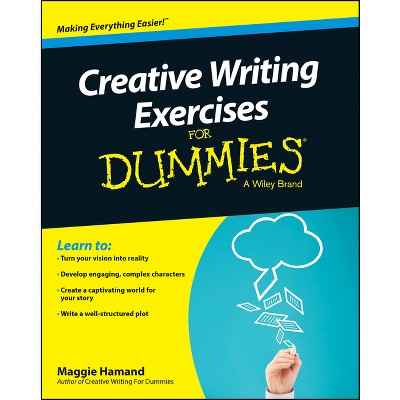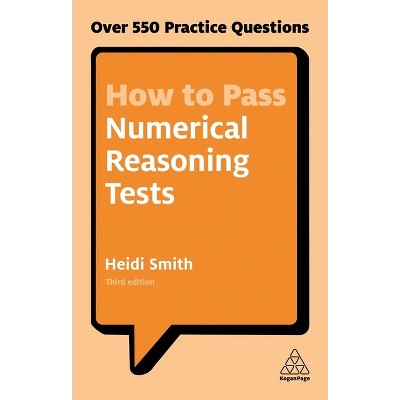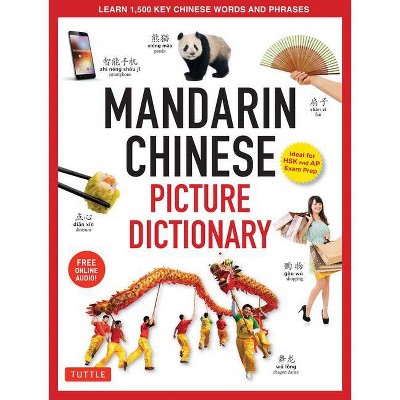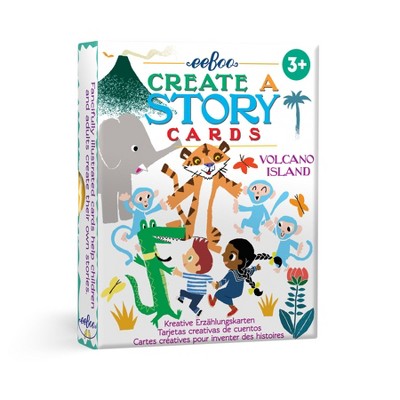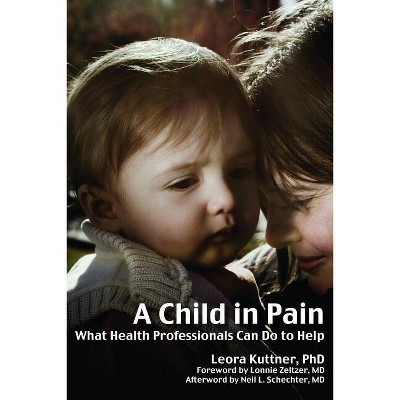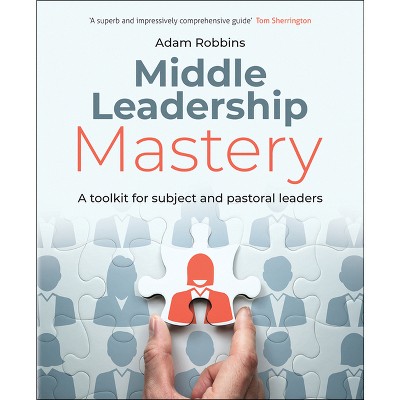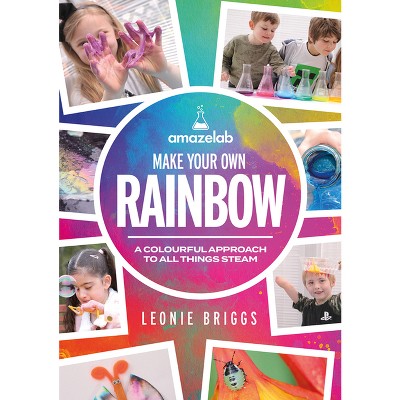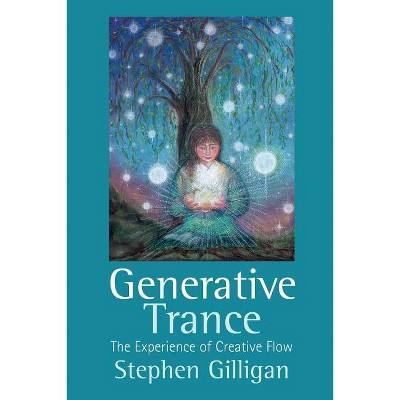Sponsored

The Magic of Metaphor - by Nick Owen (Paperback)
In Stock
Sponsored
About this item
Highlights
- The Magic of Metaphor also gives you 16 suggestions for effective story telling, and advice on organization, style, and story-telling skills.
- Author(s): Nick Owen
- 256 Pages
- Education, Philosophy, Theory & Social Aspects
Description
About the Book
This volume presents a collection of powerful stories designed to engage, inspire and transform you and your audience. The stories focus on values, responsibility, and leadership, and promote positive feelings, confidence, direction, and vision.Book Synopsis
The Magic of Metaphor also gives you 16 suggestions for effective story telling, and advice on organization, style, and story-telling skills. This is an excellent resource for teachers.Review Quotes
A selection of 77 stories for people who work with people plus suggestions on effective story telling, organisation and style. The stories can be used for pleasure, to change mood, to teach, to challenge unacceptable behaviour or other things. They are divided into four slightly mysterious categories but nevertheless form a useful bank.
The Teacher Trainer, Spring 2004
A treasure trove of wisdom and fun! Stories for leaders to use on every occasion to enhance their effectiveness.
Richard D. Field OBE, Industrialist, Leadership Coach and student
At first glance anyone looking for a different approach to embed learning could just miss this book. Its title belies the wealth of material between the covers but which must have hit the spot somewhere as it is already on its third reprint. The book presents a collection of stories designed to aengage, inspire and transform the listener as well as the reader' spouts the book's back cover. Transform is a heavy word but the main thrust behind the book being to touch people with a particularly poignant story may justify the use of the word. Set around the concept of a metaphor (which to remind those readers reaching back in their memory banks, is a descriptive phrase of something with is not literally applicable) the range of stories and anecdotes refer-red to in the book will connect with readers in a range of different and profound ways. At first glance the book can appear a little overwhelming with its plethora of material. However by referring to the r-ear section, readers will note that around 15 per cent of the overall book is turned over to understanding how to apply the metaphors and stories referred to in the text. For the seasoned teacher, using such a resource will help search out new ways of telling old stories. For the trainer who has not been around the block too many times as yet, the book will help with the realisation that stories can assist learning in a number of ways. The book may actually be of more benefit to the thinker though because it provides a wealth of opportunity to reflect and analyse. Take the anecdote about Picasso toward the middle of the book. Asked by a fellow train traveller why he (Picasso) does not paint people as they are rather than all jumbled up, he feigns ignorance. On production of a photograph of his follow passenger's wife, Picasso appears to understand the question answering ayour wife is extremely thin and about ten centimeters tall'. The point being that everyone perceives things differently is the theme of most of the other stories told with the differential being how to apply that specific area of learning. This is actually where the book's content must be put in context. Someone reciting from the tome's content will interpret it in their own way but this contributes to the fun of reading such a varied piece of work. Someone, who I spoke to recently, had used this book as an aide to her work as a coach. She remarked that she had used it to help her son write a fairy story and which had giver him some inspiration. As the parent of a pre-teen who balks at the thought of writing any more than the bare minimum, it occurred to me that this represents a possible untapped market to be aimed at. The magic of story telling does come alive in the book which is lent more than a smattering of credibility by the author's own reflections as well as the numerous other references he uses and gives credit to. One of the, dare I say it, touching elements of the book is how it stirs the reader's emotions. While I did not read every single story in the book. I lingered longer than usual over books I review due to the wide variety of anecdotes. Refer to the section on athe secret of success' and I challenge anyone not to have an introspective moment. My only real criticism of Owen's piece of work is that it would be a great help to readers to have more of a structured index than is provided should someone want to Look for information on a specific subject. Granted, it might be a little like trying to find the proverbial needle in a haystack but even just a rough guide pointing to a story for readers who prefer the option for a quick answer to a problem would help. Everyone likes a good story and even if not strictly true, tales inspire hope in people and makes us believe we can do things. Although the book touts itself mainly as a resource for those in leadership, it could just be a good read for someone looking for a bit of light relief without actually having to attach too much meaning to what they are reading.
HR Network Scotland 2008
Nick Owen has produced a bit of magic in this brilliant book; it is a collection of stories which can be used in a variety of settings, from teaching, to counseling. This is a highly enjoyable and readable book which inspires, and delights the reader on every page. The stories can be used as they are or adapted for different situations but each and every one of them has a message for most encounters in life. I found the last chapter particularly useful as it provides a guide to how the stories can be used in different situations. This is a book I will continue to use in many situations from telling stories to children to teaching adults for many years to come. I will be highly recommending this book to both my students and colleagues.
Julie Foster, Senior Lecturer, Faculty of Health Medical Sciences and Social Care University of Cumbria
The book appeals on diverse levels with insights and enlightening illustrations that will illuminate teaching and learning. Drawn from ancient oriental traditions, contemporary sources and the author''s own repertoire - the experience is challenging, life-affirming and enriching.
Mick Reid, Voluntary Service Overseas, London
The contents are accurately summed up in the book's subtitle, `77 Stories for Teachers. Trainers & Thinkers'. Drawn from a variety of sources, the stories are well-chosen and accessible. neatly combining ancient Sufi wisdom with road rage, two-pound coins and other 21st century trappings. Trainers and public speakers will be well aware of the value of anecdotes: they can stimulate group discussion, make people stop and think about a topic from a new perspective, vary the tone and pace of a session, and so on (the author lists 58 possible uses). To help teachers and trainers find anecdotes to fit a particular context, stories are arranged in six sections, and within each section there's a good variety to choose from - short, epigrammatic ones to underline the message, or long, rambling ones that will give listeners a chance to relax and atighten up' during a demanding session. There is also advice from the author on how to develop and improve your storytelling skills, as we[[ as dialogues between the Magician and his hungry young Apprentice about how to use stories to best effect, why the same story can be interpreted in different but equally valid ways, and other related topics. The entire book is in keeping with its subject-matter: easy to read and offering its advice gently and obliquely, it contains plenty of food for thought for those who want it.
City Business Review
This book gives the communicator a refreshing and creative way of cutting through the language barrier of Information Technology and delivering clear messages to often diverse audiences.
Alison Hood, Managing Consultant and Operations Director for the Wholesale Investment Banking Practice
This excellent book provides a very useful guide on how to get started on the subject. It is practical and pragmatic but also deep and meaningful with great potential for enhancing therapeutic care-giving. Written in a clear and accessible style the book is relevant to health professionals, lay therapists, and in fact anyone who is interested in therapeutic effect. Anyone with an interest in therapeutic story-telling should buy this book.
Andy Young, RMN, LLB(Hons), LLM, PG Cert HE, Senior Lecturer in Mental Health Nursing, Sheffield Hallam University
Useful source of metaphors and stories for any trainer who want to promote a positive outlook and feeling within their training suitable for both public and private sector audiences, counsellors to CEO's.
Patrick Hare, Kaizen Training
Shipping details
Return details
Frequently bought together
Trending Non-Fiction







